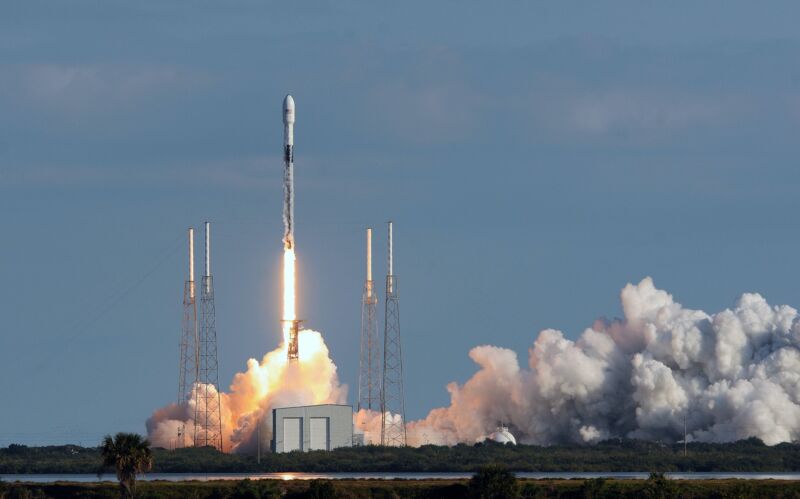FCC moves cautiously in plan to prevent space debris and satellite collisions

Enlarge / A SpaceX Falcon 9 rocket carrying 60 Starlink satellites launching from Cape Canaveral Air Force Station on January 29, 2020. (credit: Getty Images | SOPA Images )
The Federal Communications Commission today unanimously approved new rules for preventing orbital debris and collisions in space, but only after revising the plan to address criticism that the commission was moving too fast and imposing requirements that could conflict with NASA recommendations. The Department of Commerce had urged the FCC to delay action, but the commission went ahead with a stripped-down plan.
The new rules, the first update to the FCC's orbital-debris policies in 15 years, are being imposed as plans by SpaceX and other companies to launch thousands of broadband satellites raise concerns about collisions in space. While the FCC delayed action on several parts of the order, it still imposed these new requirements:
The new rules improve the specificity and clarity of rules that require disclosure of debris mitigation plans by satellite companies. The changes include requiring that satellite applicants assign numerical values to collision risk, probability of successful post-mission disposal, and casualty risk associated with those satellites that will re-enter earth's atmosphere. Satellite applicants will also have new disclosure requirements related to protecting inhabitable spacecraft, maneuverability, use of deployment devices, release of persistent liquids, proximity operations, trackability and identification, and information sharing for situational awareness. The new rules also update the process for geostationary orbit satellite license term extension requests.
The order approved today hasn't been released yet but is apparently substantially different from a draft version that was made public a few weeks ago. Originally, today's vote was going to impose "a requirement that all satellites must be equipped with maneuverability sufficient to perform collision avoidance maneuvers during any period when the satellite is in an orbit that is above the International Space Station (approximately 400 kilometers altitude)." But instead of adopting that requirement today, the FCC moved it into a Further Notice of Proposed Rulemaking so the commission can seek public comment on the change before finalizing it.
Read 18 remaining paragraphs | Comments